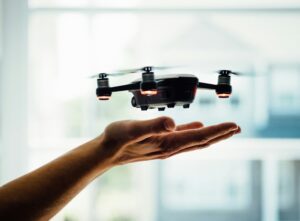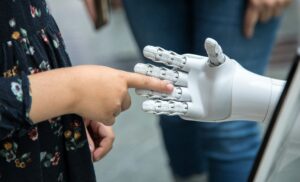From classroom curiosities to the foundations of modern STEM education, robotics and drone technology are reshaping how students learn and think. No longer confined to after-school clubs or science fairs, these tools are helping prepare learners for a world driven by innovation, automation, and data. In today’s K–12 classrooms, robots and drones don’t just teach coding or flight — they spark creativity, collaboration, and curiosity.
As Driving K-12 Innovation Advisory Board member David Deeds of Footprints International School in Cambodia recently noted, robotics and drone technology are transforming K–12 education by turning abstract STEM concepts into hands-on, interdisciplinary learning experiences that build future-ready skills. Students become engineers, pilots, and storytellers all at once — testing, tinkering, and transforming ideas into action. The result is more than technical ability; it’s confidence, resilience, and the mindset to thrive in a connected, technology-rich future.
CoSN’s Driving K-12 Innovation initiative defines Robots and Drones as: Machines constructed to mimic, extend, or assist human functions, and in education they serve as powerful hands-on tools for STEM and STEAM learning. By engaging students in design, programming, and real-world problem-solving, these technologies promote creativity, critical thinking, and technical skill development. Increasingly connected with AI, simulations, and immersive technologies, robotics and drones provide interactive opportunities for students to explore innovation and prepare for future careers.
With this in mind, Deeds recently shared the reflections below in our online forum, offering these timely insights on robots and drones:
In K-12 schools, robotics and drone technology have moved far beyond the realm of gadgets and novelty. They are increasingly recognized as powerful tools for preparing students to thrive in a complex, technology-driven world. As education shifts from memorization toward creativity and problem solving, these devices bring STEM concepts to life and inspire curiosity across age groups.
Robots give students a tangible way to learn coding, engineering, and logical thinking. Simple platforms such as LEGO Spike, VEX or micro:bit-driven robots let learners design, build and program solutions to real problems. This hands-on experience transforms abstract concepts (loops, sensors, algorithms, etc.) into actions they can see and control. For younger grades, robots can act as friendly helpers to practice sequencing and cause-and-effect thinking; older students can move into advanced automation, artificial intelligence and mechanical design.

These tools make learning active and purposeful. Students who work with robots and drones naturally engage in computational thinking: breaking problems into parts, designing solutions, testing, debugging and improving. This process builds resilience and adaptability, skills essential beyond school walls. It also supports interdisciplinary learning. For example, a single drone project may combine math (flight paths and distance), science (wind and weather), geography (mapping) and language arts (reporting findings).
For teachers, robotics and drones are not just about gadgets but about fostering inquiry and collaboration. When students work in teams to troubleshoot a robot’s code or adjust a drone’s flight plan, they practice communication and leadership. For managers, integrating these technologies demonstrates forward-looking curriculum design that appeals to parents, builds institutional reputation and can open doors to partnerships with local industry or universities.
The future promises even greater opportunity. Robots are rapidly gaining capabilities in artificial intelligence and machine vision, allowing for more sophisticated student projects such as autonomous navigation or environmental sensing. Drones are becoming safer and easier to control; some now offer coding interfaces suitable for middle and high school. As prices fall, schools will find it increasingly practical to maintain small fleets for regular use.
Emerging applications include virtual reality combined with drone flight for immersive fieldwork, AI-enhanced robots that can help with personalized tutoring and drone-based data gathering for authentic research. Many countries are beginning to add drone and robotics certifications to secondary curricula, preparing students for jobs in surveying, agriculture, logistics and emergency services.
Success depends on planning. Teachers need professional development to feel confident, and schools must set clear safety protocols and align activities with learning goals. But done thoughtfully, robots and drones can transform classrooms into labs of exploration and invention. They help students move from passive consumers of technology to active creators, an essential shift for future-ready education.
AUTHOR: David Deeds, Footprints International School, Cambodia
Member of CoSN’s Driving K-12 Advisory 2025-26
David W. Deeds has been teaching, training and managing in international schools (K to 12 to grad school) for over 20 years. He’s currently an ICT Teacher for Footprints International School in Phnom Penh.
Published on November 25, 2025
CoSN is vendor neutral and does not endorse products or services. Any mention of a specific solution is for contextual purposes.

